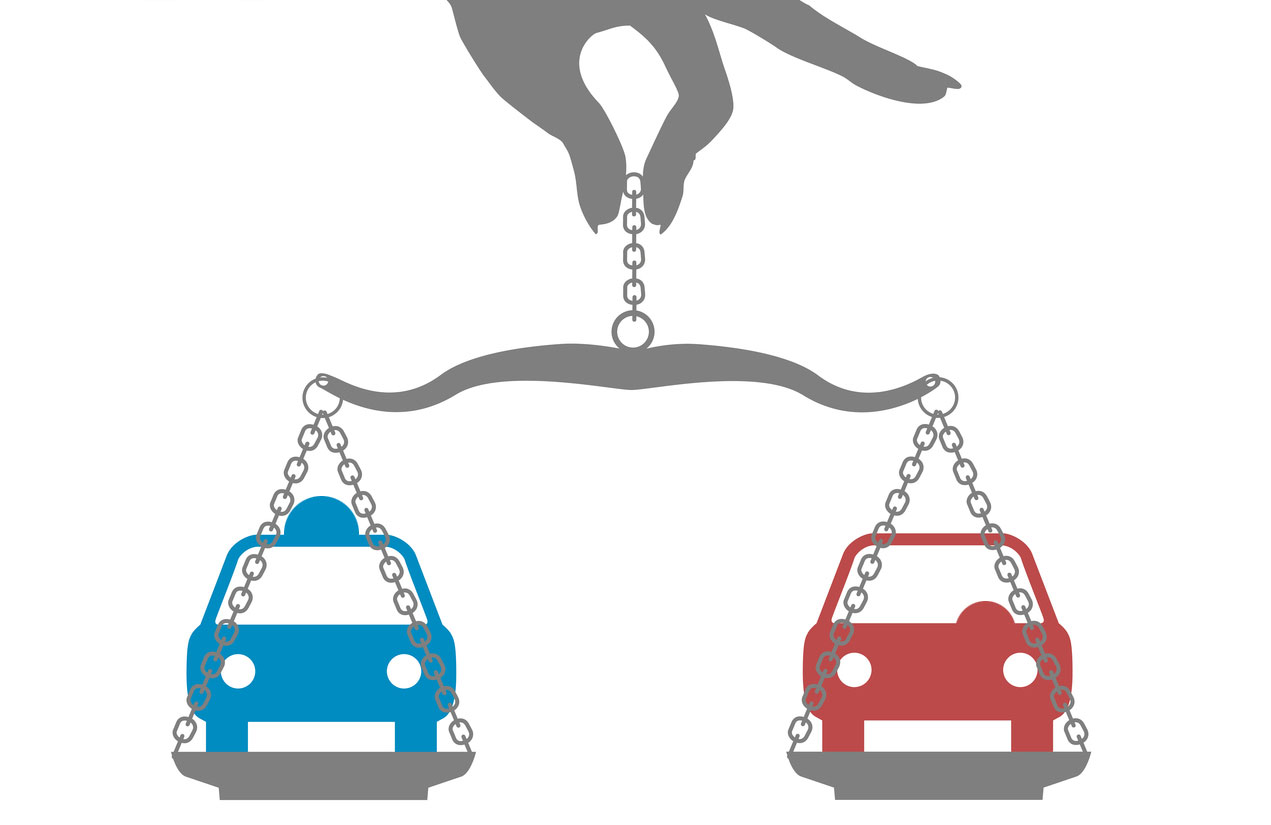
Robohub.org
Congress’ automated driving bills are both more and less than they seem
 Bills being considered by Congress deserve our attention—but not our full attention. To wit: When it comes to safety-related regulation of automated driving, existing law is at least as important as the bills currently in Congress (HB 3388 and SB 1885). Understanding why involves examining all the ways that the developer of an automated driving system might deploy its system in accordance with federal law as well as all the ways that governments might regulate that system. And this examination reveals some critical surprises.
Bills being considered by Congress deserve our attention—but not our full attention. To wit: When it comes to safety-related regulation of automated driving, existing law is at least as important as the bills currently in Congress (HB 3388 and SB 1885). Understanding why involves examining all the ways that the developer of an automated driving system might deploy its system in accordance with federal law as well as all the ways that governments might regulate that system. And this examination reveals some critical surprises.
As automated driving systems get closer to public deployment, their developers are closely evaluating how the full set of Federal Motor Vehicle Safety Standards (FMVSS) will apply to these systems and to the vehicles on which they are installed. Rather than specifying a comprehensive regulatory framework, these standards impose requirements on only some automotive features and functions. Furthermore, manufacturers of vehicles and of components thereof self-certify that their products comply with these standards. In other words, unlike its European counterparts (and a small number of federal agencies overseeing products deemed more dangerous than motor vehicles), the National Highway Traffic Safety Administration (NHTSA) does not prospectively approve most of the products it regulates.
There are at least seven (!) ways that the developer of an automated driving system could conceivably navigate this regulatory regime.
First, the developer might design its automated driving system to comply with a restrictive interpretation of the FMVSS. The attendant vehicle would likely have conventional braking and steering mechanisms as well as other accoutrements for an ordinary human driver. (These conventional mechanisms could be usable, as on a vehicle with only part-time automation, or they might be provided solely for compliance.) NHTSA implied this approach in its 2016 correspondence with Google, while another part of the US Department of Transportation even highlighted those specific FMVSS provisions that a developer would need to design around. Once the developer self-certifies that its system in fact complies with the FMVSS, it can market it.
Second, the developer might ask NHTSA to clarify the agency’s understanding of these provisions with a view toward obtaining a more accommodating interpretation. Previously—and, more to the point, under the previous administration—NHTSA was somewhat restrictive in its interpretation, but a new chief counsel might reach a different conclusion about whether and how the existing standards apply to automated driving. In that case, the developer could again simply self-certify that its system indeed complies with the FMVSS.
Third, the developer might petition NHTSA to amend the FMVSS to more clearly address (or expressly abstain from addressing) automated driving systems. This rulemaking process would be lengthy (measured in years rather than months), but a favorable result would give the developer even more confidence in self-certifying its system.
Fourth, the developer could lobby Congress to shorten this process—or preordain the result—by expressly accommodating automated driving systems in a statute rather than in an agency rule. This is not, by the way, what the bills currently in Congress would do.
Fifth, the developer could request that NHTSA exempt some of its vehicles from portions of the FMVSS. This exemption process, which is prospective approval by another name, requires the applicant to demonstrate that the safety level of its feature or vehicle “at least equals the safety level of the standard.” Under existing law, the developer could exempt no more than 2,500 new vehicles per year. Notably, however, this could include heavy trucks as well as passenger cars.
Sixth, the developer could initially deploy its vehicles “solely for purposes of testing or evaluation” without self-certifying that those vehicles comply with the FMVSS. Although this exception is available only to established automotive manufacturers, a new or recent entrant could partner with or outright buy one of the companies in that category. Many kinds of large-scale pilot and demonstration projects could be plausibly described as “testing or evaluation,” particularly by companies that are comfortable losing money (or comfortable describing their services as “beta”) for years on end.
Seventh, the developer could ignore the FMVSS altogether. Under federal law, “a person may not manufacture for sale, sell, offer for sale, introduce or deliver for introduction in interstate commerce, or import into the United States, any [noncomplying] motor vehicle or motor vehicle equipment.” But under the plain meaning of this provision (and a related definition of “interstate commerce”), a developer could operate a fleet of vehicles equipped with its own automated driving system within a state without certifying that those vehicles comply with the FMVSS.
This is the background law against which Congress might legislate—and against which its bills should be evaluated.
Both bills would dramatically expand the number of exemptions that NHTSA could grant to each manufacturer, eventually reaching 100,000 per year in the House version. Some critics of the bills have suggested that this would give free rein to manufactures to deploy tens of thousands of automated vehicles without any prior approval.
But considering this provision in context provides two key insights. First, automated driving developers may already be able to lawfully deploy tens of thousands of their vehicles without any prior approval—by designing them to comply with the FMVSS, by claiming testing or evaluation, or by deploying an in-state service. Second, the exemption process gives NHTSA far more power than it otherwise has: The applicant must convince the agency to affirmatively permit it to market its system.
Both bills would also require the manufacturer of an automated driving system to submit a “safety evaluation report” to NHTSA that “describes how the manufacturer is addressing the safety of such vehicle or system.” This requirement would formalize the safety assessment letters that NHTSA encouraged in its 2016 and 2017 automated vehicle policies. These three frameworks all evoke my earlier proposal for what I call the “public safety case,” wherein an automated driving developer tells the rest of us what they are doing, why they think it is reasonably safe, and why we should believe them.
Unsurprisingly, I think this is a fine idea. It encourages innovation in safety assurance and regulation, informs regulators, and—if disclosure is meaningful—helps educate the public at large. Congress could strengthen these provisions as currently drafted, and it could give NHTSA the resources needed to effectively engage with these reports. Regardless, in evaluating the bills, it is important to understand that these provisions increase rather than decrease what an automated driving system developer must do under federal law. They are an addition rather than an alternative to each of the seven pathways described above.
Both bills would also exclude heavy trucks and buses from their definitions of automated vehicle. This exclusion, added at the behest of labor groups concerned about the eventual implications of commercial truck automation, means that NHTSA cannot exempt tens of thousands of heavy vehicles per manufacturer from a safety standard. But each truck manufacturer can still seek to exempt up to 2,500 vehicles per year—if such an exemption is even required. And, depending on how language relating to the safety evaluation reports is interpreted, this exemption might even relieve automated truck manufacturers of the obligation to submit these reports.
Finally, these bills largely preserve NHTSA’s existing regulatory authority—and that authority involves much more than making rules and granting exemptions to those rules. Crucially, the agency can conduct investigations and pursue recalls—even if a vehicle fully complies with the applicable FMVSS. This is because ensuring motor vehicle safety requires more than satisfying specific safety standards. And this broader definition of safety—“the performance of a motor vehicle or motor vehicle equipment in a way that protects the public against unreasonable risk of accidents occurring because of the design, construction, or performance of a motor vehicle, and against unreasonable risk of death or injury in an accident, and includes nonoperational safety of a motor vehicle”—gives NHTSA great power.
States and the municipalities within them also play an important role in regulating road safety—and my next post considers the effect of the Senate bill in particular on this state and local authority.
tags: Automotive




